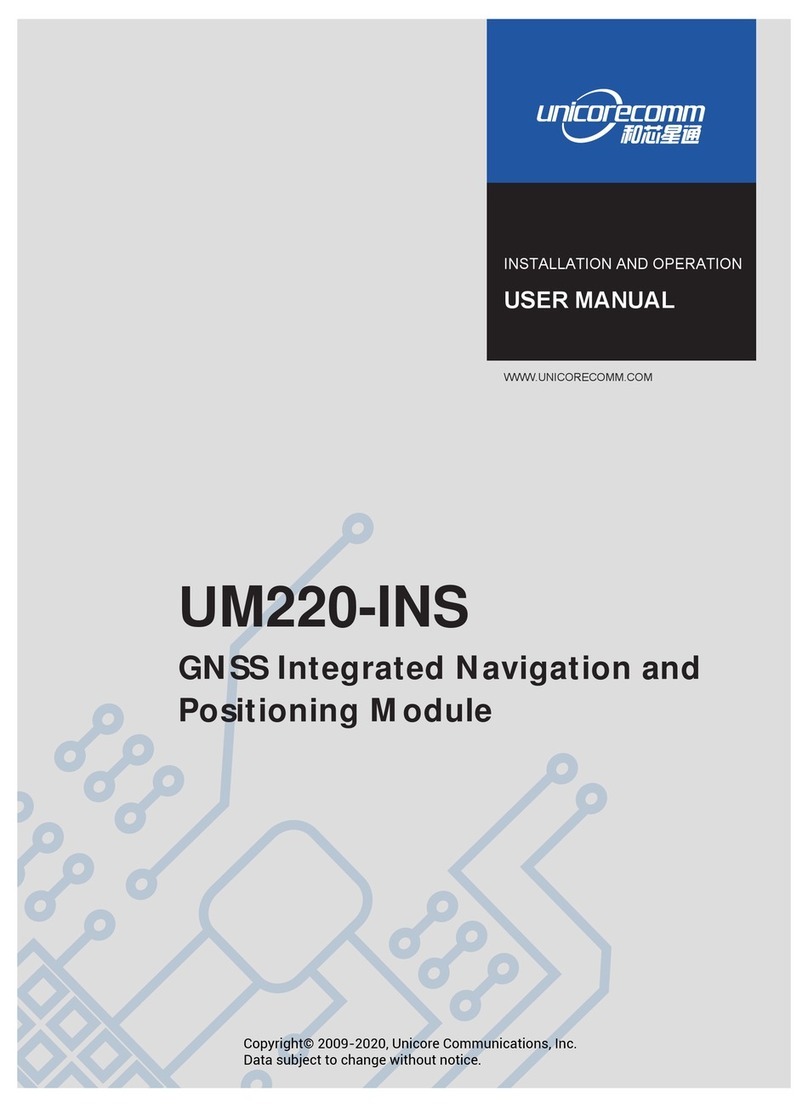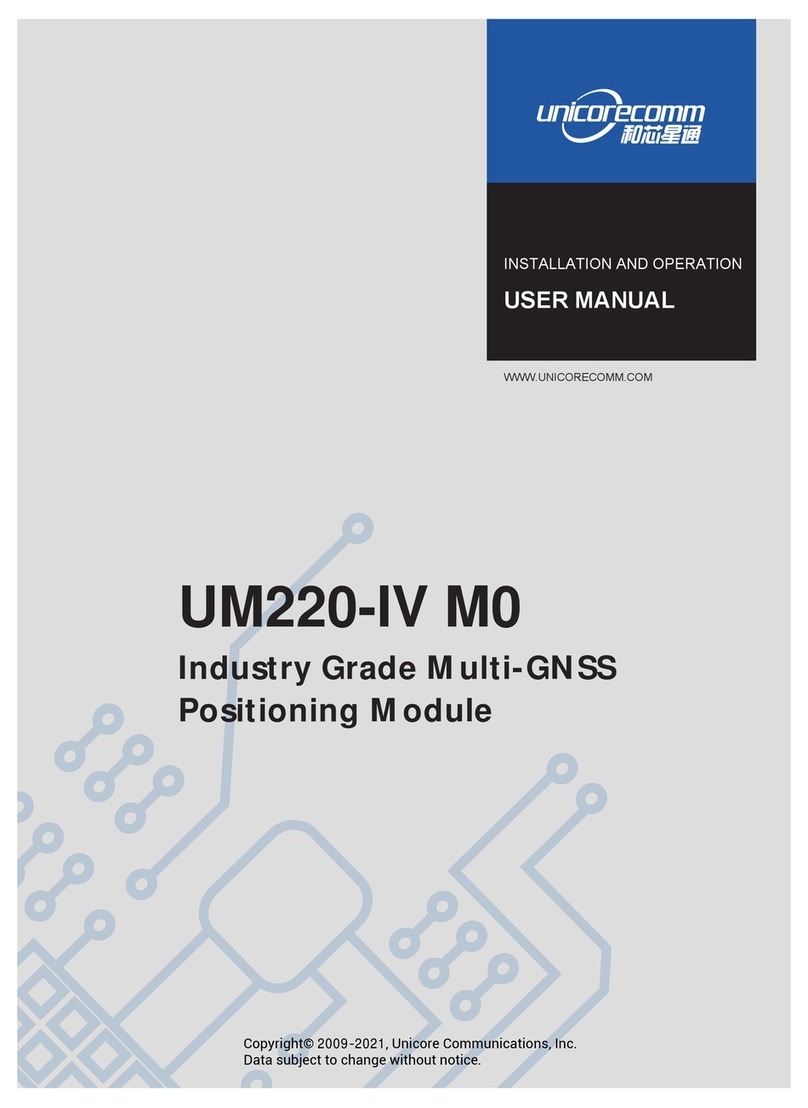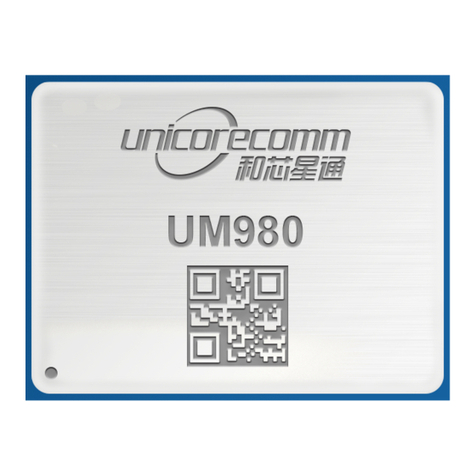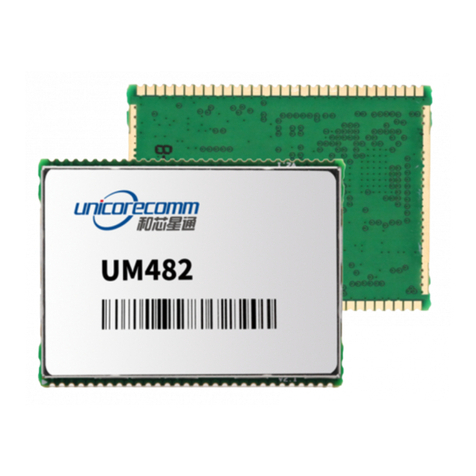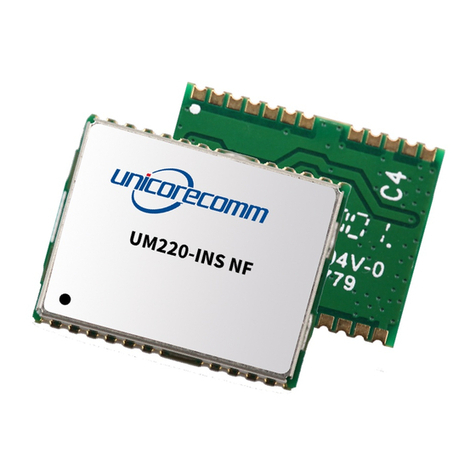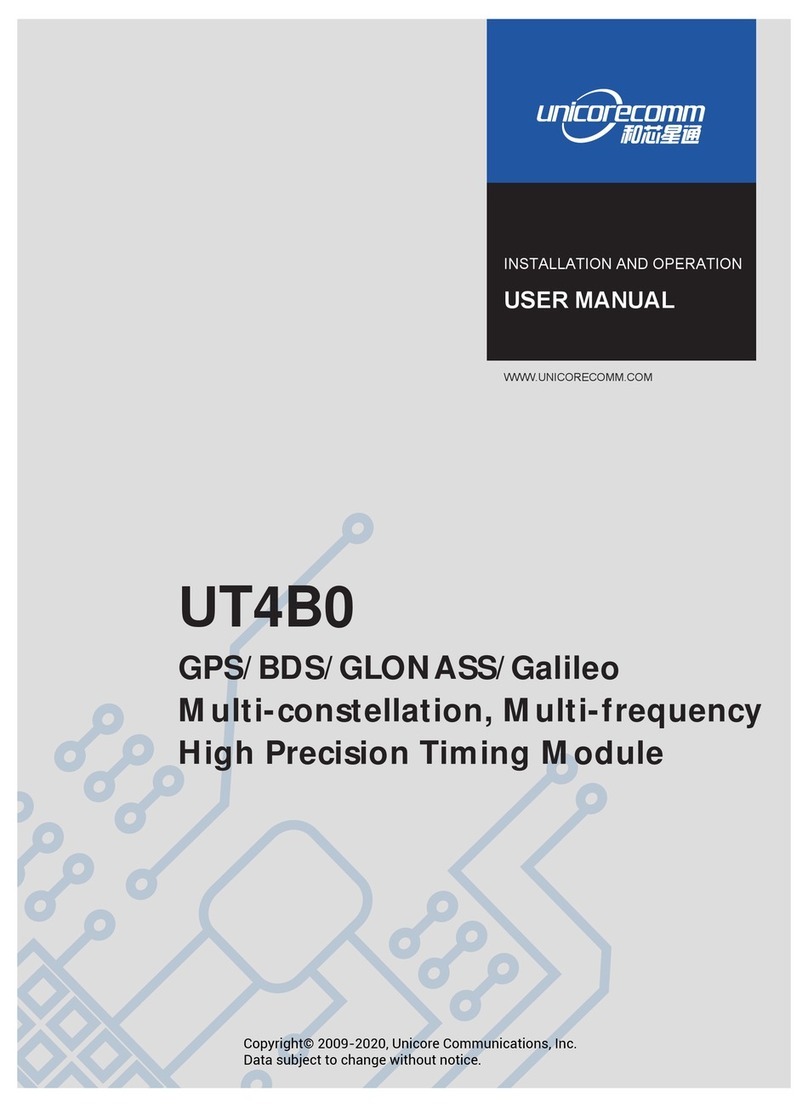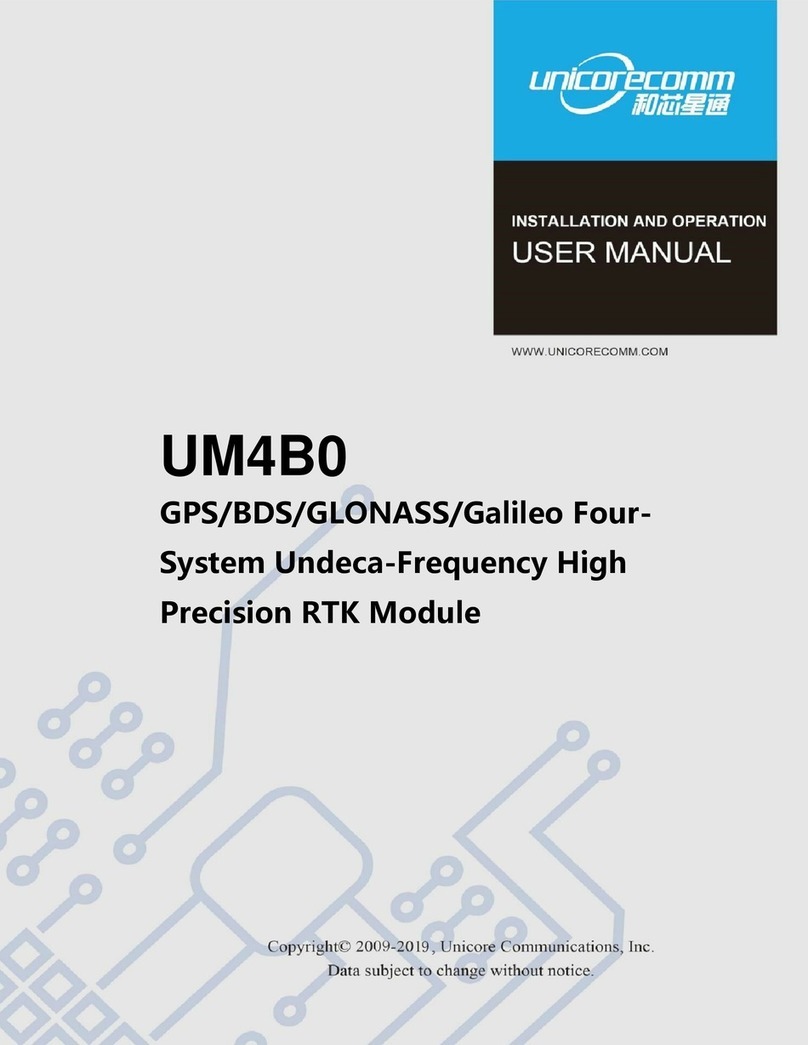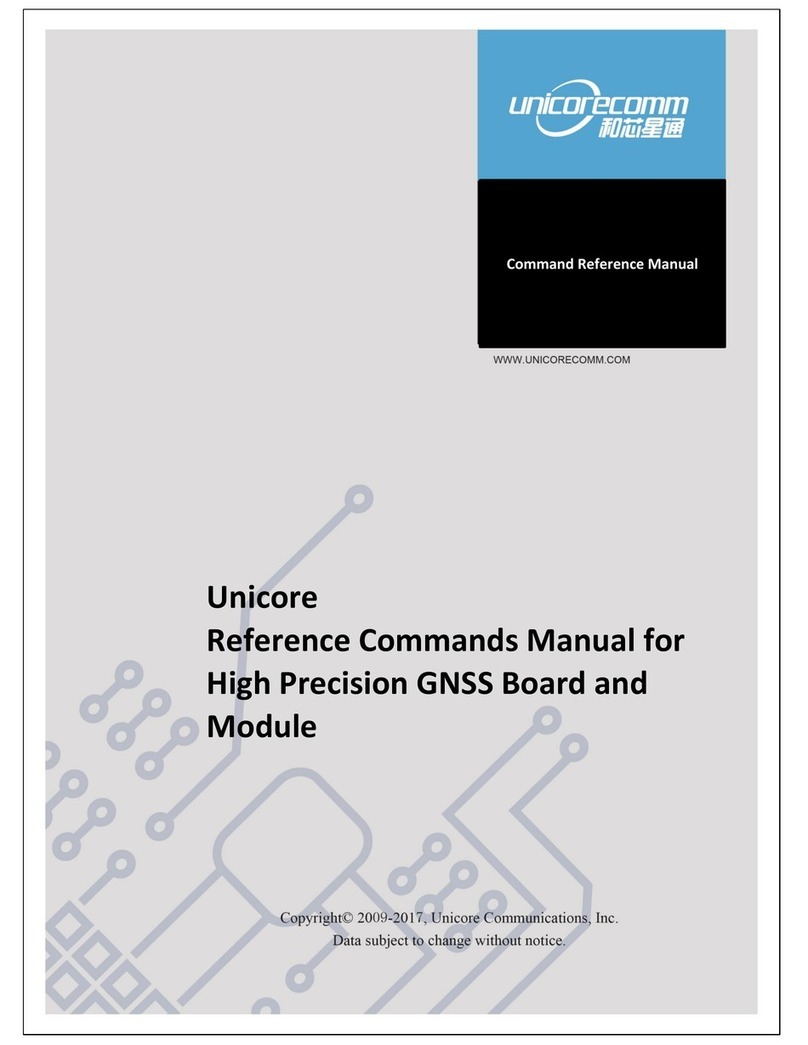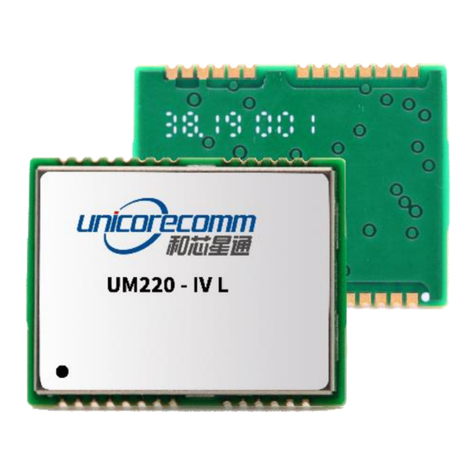ii
Legal Right Notice
This manual provides information and details on the products of Unicore Communication, Inc.
(“Unicore”) referred to herein.
All rights, title and interest to this document and the information such as data, designs, layouts
contained in this manual are fully reserved, including but not limited to the copyrights, patents,
trademarks and other proprietary rights as relevant governing laws may grant, and such rights
may evolve and be approved, registered or granted from the whole information aforesaid or any
part(s) of it or any combination of those parts.
Unicore holds the trademarks of “和芯星通”,“UNICORECOMM” and other trade name, trademark,
icon, logo, brand name and/or service mark of Unicore products or their product serial referred
to in this manual (collectively “Unicore Trademarks”).
This manual or any part of it, shall not be deemed as, either expressly, implied, by estoppel or
any other form, the granting or transferring of Unicore rights and/or interests (including but not
limited to the aforementioned trademark rights), in whole or in part.
Disclaimer
The information contained in this manual is provided “as is” and is believed to be true and
correct at the time of its publication or revision. This manual does not represent, and in any
case, shall not be construed as a commitments or warranty on the part of Unicore with respect
to the fitness for a particular purpose/use, the accuracy, reliability and correctness of the
information contained herein.
Information, such as product specifications, descriptions, features and user guide in this
manual, are subject to change by Unicore at any time without prior notice, which may not be
completely consistent with such information of the specific product you purchase.
Should you purchase our product and encounter any inconsistency, please contact us or our
local authorized distributor for the most up-to-date version of this manual along with any
addenda or corrigenda.
